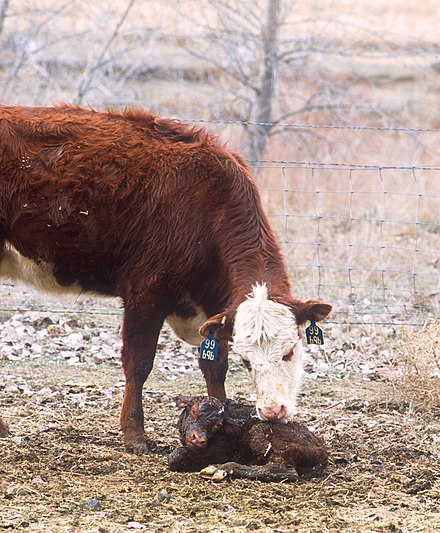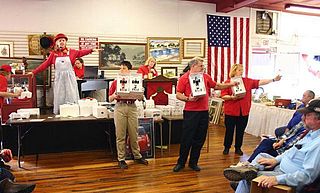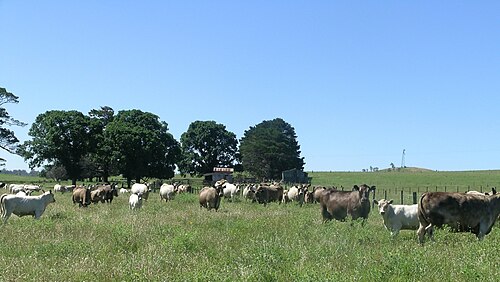
The Canchim breed is a breed of beef cattle developed in Central Brazil by crossing European Charolais cattle with Indubrazil cattle already kept in Brazil where Asian Zebu type cattle are best suited to the tropical conditions. When compared with Zebu bulls, Canchim bulls produce the same number of calves, but heavier and of superior quality. Compared to European breeds, the Canchim bull produces calves with the same weight but in larger numbers. The fast-growing progeny, from crossbred zebu cows with Canchim bulls, can be slaughtered at 18 months old from feedlots after weaning, up to 24 months old from feedlots after grazing and at 30 months from grazing on the range.
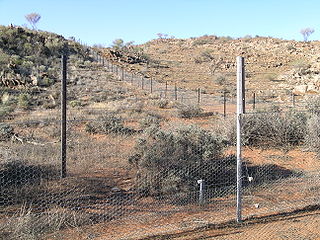
Overgrazing occurs when plants are exposed to intensive grazing for extended periods of time, or without sufficient recovery periods. It can be caused by either livestock in poorly managed agricultural applications, game reserves, or nature reserves. It can also be caused by immobile, travel restricted populations of native or non-native wild animals. However, "overgrazing" is a controversial concept, based on equilibrium system theory.

Highland cattle are a Scottish cattle breed. They have long horns and long, wavy, woolly coats that are coloured black, brown, yellow, white, grey, "silver", or tan, and they also may be brindled. Highlands are raised primarily for their meat. They originated in the Highlands and Outer Hebrides islands of Scotland and were first mentioned in the 6th century AD. The first herd book described two distinct types of Highland cattle but, due to crossbreeding between the two, only one type now exists and is registered. They have since been exported worldwide.

The Jersey is a breed of small dairy cattle. Originally bred in the Channel Island of Jersey, the breed is popular for the high butterfat content of its milk and the lower maintenance costs attending its lower bodyweight, as well as its genial disposition. The Jersey is one of three Channel Island cattle breeds, the others being the Alderney – now extinct – and the Guernsey.
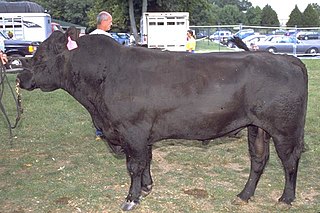
The Aberdeen Angus, sometimes simply Angus, is a Scottish breed of small beef cattle. It derives from cattle native to the counties of Aberdeenshire and Angus in north-eastern Scotland.

Weaning is the process of gradually introducing an infant human or mammal to what will be its adult diet while withdrawing the supply of its mother's milk.

Holstein Friesians are a breed of dairy cattle originating from the Dutch provinces of North Holland and Friesland, and Schleswig-Holstein in Northern Germany and Jutland. They are known as the world's highest-production dairy animals.

Different cattle feeding production systems have separate advantages and disadvantages. Most cattle in the US have a diet that is composed of at least some forage. In fact, most beef cattle are raised on pasture from birth in the spring until autumn. Then for pasture-fed animals, grass is the forage that composes all or at least the great majority of their diet. Cattle fattened in feedlots are fed small amounts of hay supplemented with grain, soy and other ingredients in order to increase the energy density of the diet. The debate is whether cattle should be raised on diets primarily composed of pasture (grass) or a concentrated diet of grain, soy, corn and other supplements. The issue is often complicated by the political interests and confusion between labels such as "free range", "organic", or "natural". Cattle raised on a primarily forage diet are termed grass-fed or pasture-raised; for example meat or milk may be called grass-fed beef or pasture-raised dairy. However, the term "pasture-raised" can lead to confusion with the term "free range", which does not describe exactly what the animals eat.

The German Angus is a modern German breed of beef cattle. It was bred in the 1950s in Germany by crossing Aberdeen Angus with various native German cattle breeds: German Black Pied, Deutsche Rotbunte, and Fleckvieh.
Kalmyk cattle are a beef cattle breed originating in Mongolia and northwestern China and taken to southwestern Russia by migrating Kalmyk tribes in the early 17th century. They are now found in central Asia and Southern Russia on dry steppe pastures.
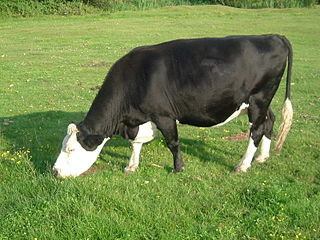
The Black Hereford is a crossbreed of beef cattle produced in the British Isles with Hereford beef bulls with Holstein-Friesian dairy cows. Black Herefords are not usually maintained from generation to generation, but are constantly produced as a byproduct of dairy farming as a terminal cross. They are one of the most common types of beef cattle in the British Isles, outnumbering many pure beef breeds.

Cattle—colloquially cows—are the most common type of large domesticated ungulates. They are a prominent modern member of the subfamily Bovinae, are the most widespread species of the genus Bos, and are most commonly classified collectively as Bos taurus.

Cattle slaughter, especially cow slaughter is a controversial topic in India because of the cattle's traditional status as an endeared and respected living being to many in Hinduism, Buddhism, Sikhism, Jainism, in contrast to cattle being considered as an acceptable source of meat by many in Islam, Christianity as well as some adherents of Indian religions. More specifically, the cow's slaughter has been shunned because of a number of reasons such as being associated with god Krishna in Hinduism, cattle being respected as an integral part of rural livelihoods and an essential economic necessity. Cattle slaughter has also been opposed by various Indian religions because of the ethical principle of Ahimsa (non-violence) and the belief in the unity of all life.
Creep feeding is a method of supplementing the diet of young livestock, primarily in beef calves, by offering feed to animals who are still nursing. Creep feed is sometimes offered to swine, but it is impossible with companion grazing animals such as sheep and goats. Creep feeding is used almost exclusively in situations where animal prices are high, feed costs are low, offspring is born in the spring, and the animals are purebred.
